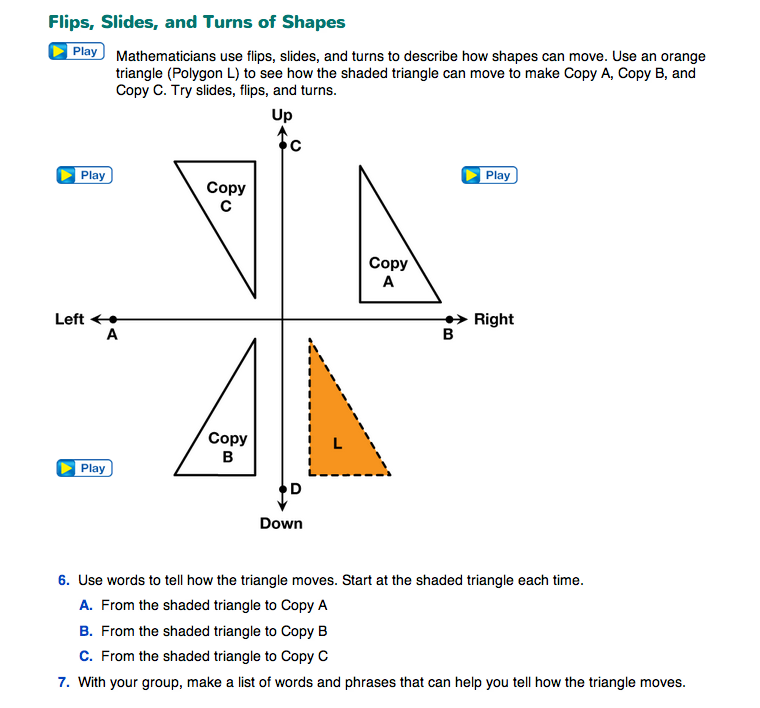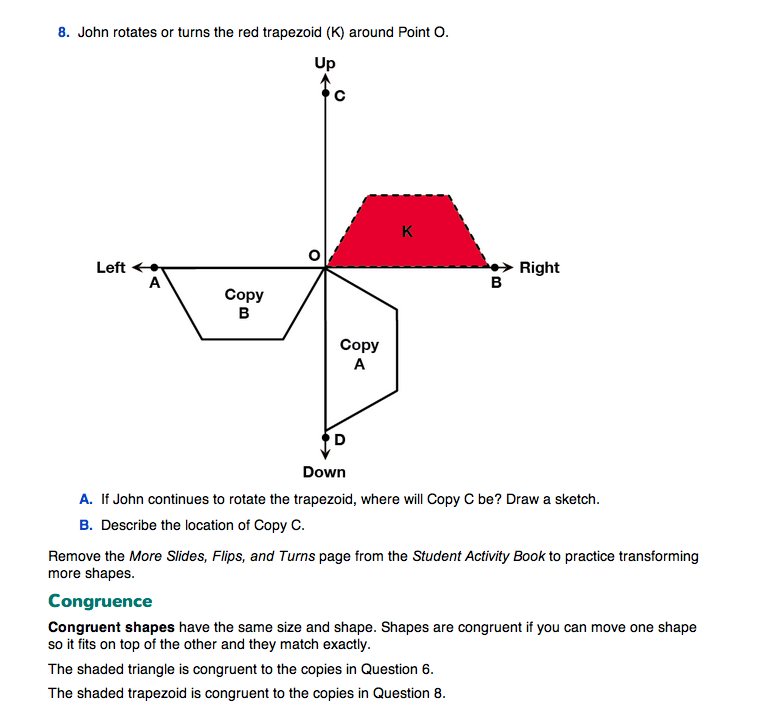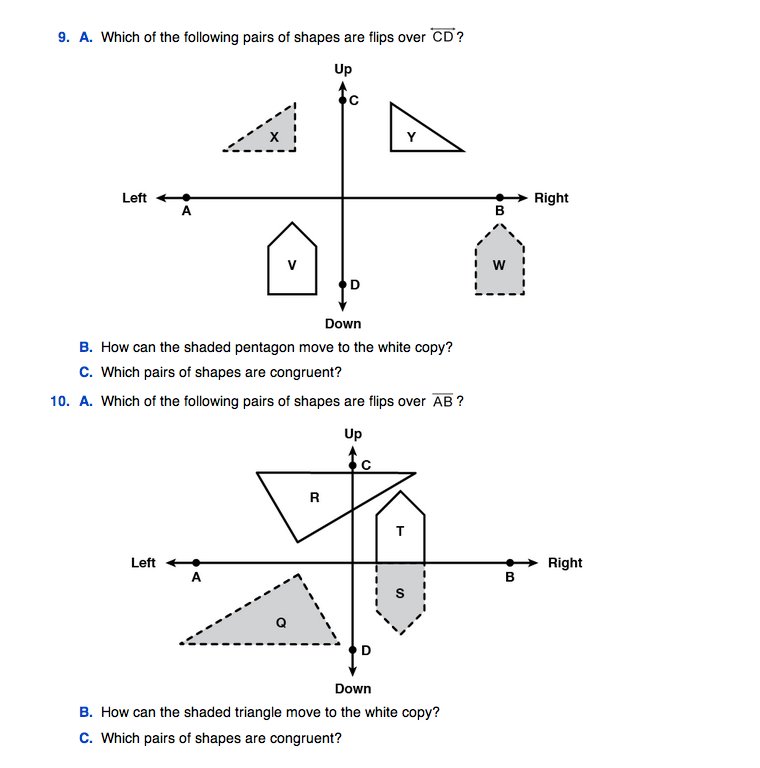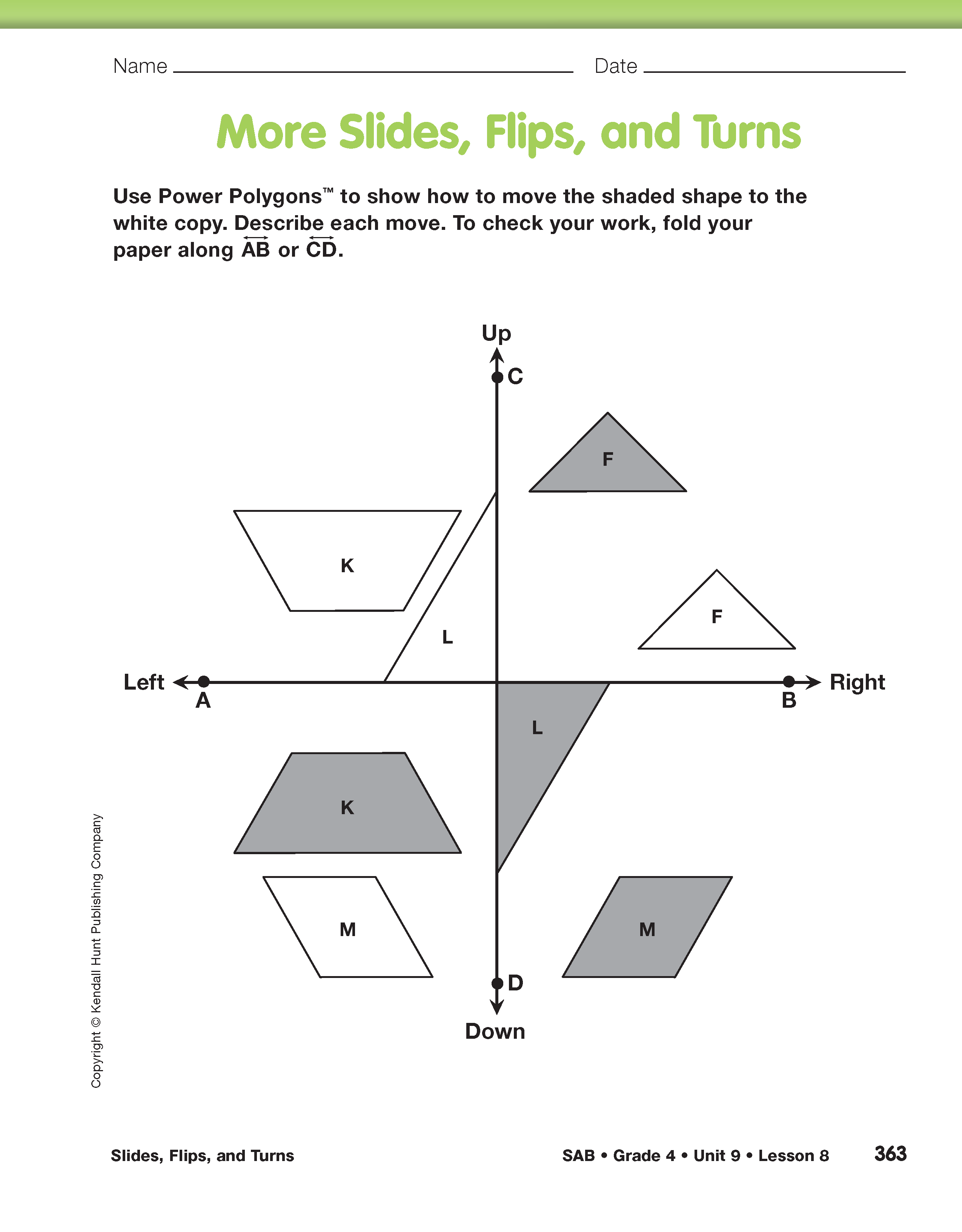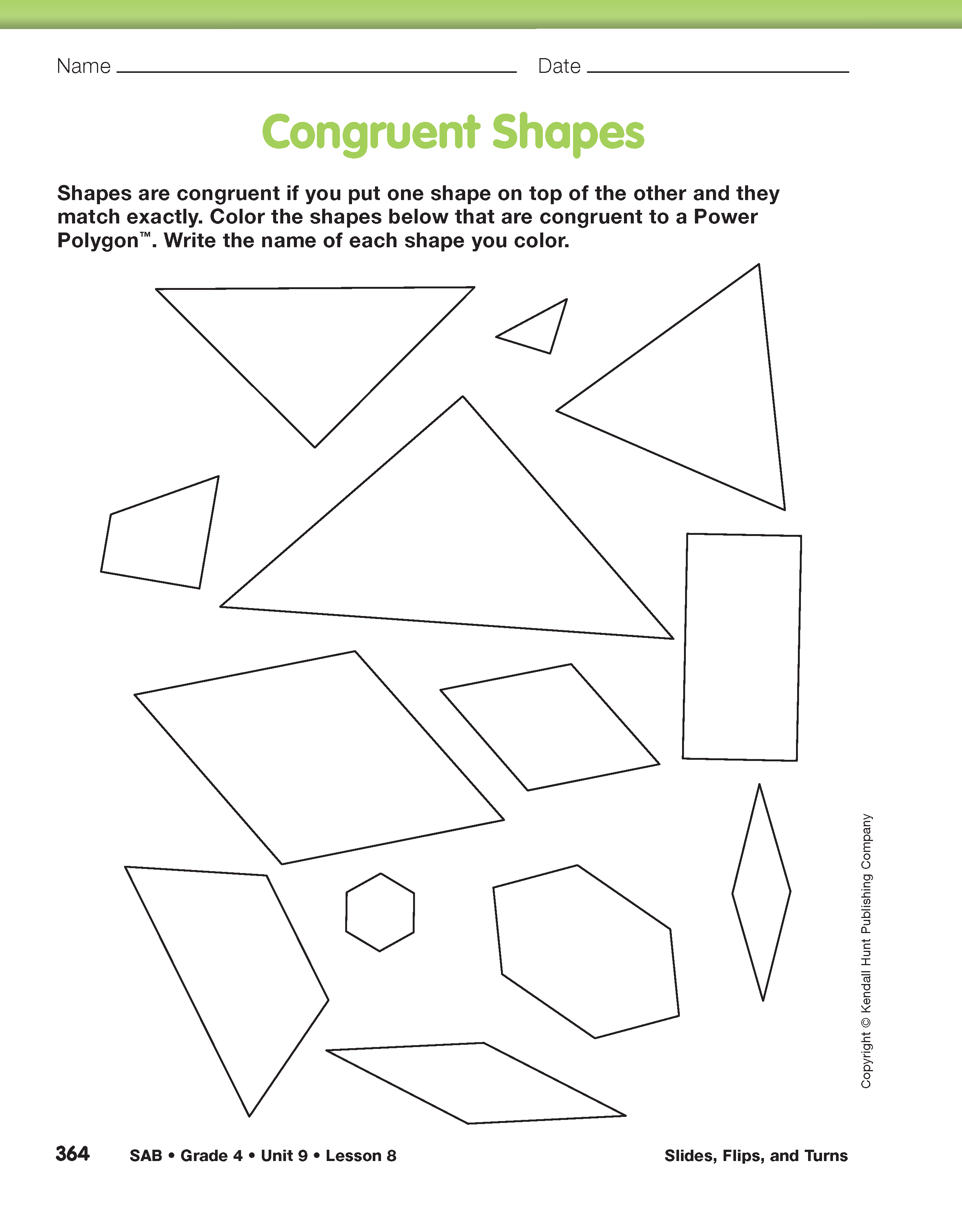Slides, Flips, and Turns
Est. Class Sessions: 2Developing the Lesson
Part 2. Slides, Flips, and Turns of Shapes
Transform the Triangle. Refer students to Question 6 in the Student Guide. In the introduction to this problem, students describe how a triangle moves to a copy of that triangle. The shapes on the page are based on the orange triangle from the Power Polygons™. Encourage students to manipulate the orange triangle to answer the questions. Copy A is made by sliding the triangle from its original place. Copy B is made by flipping the triangle over  . The orange triangle can move different ways to make Copy C. The orange triangle can be flipped over
. The orange triangle can move different ways to make Copy C. The orange triangle can be flipped over  and then over
and then over  , or the orange triangle can be turned around the point of intersection of
, or the orange triangle can be turned around the point of intersection of  and
and  . Have students use the orange triangle to show both of these transformations or movements.
. Have students use the orange triangle to show both of these transformations or movements.
Assign Questions 6–8. In Question 7, small groups are asked to generate a list of words and phrases that can be used to describe how the triangle moves. Once groups have had a chance to generate a list, collect the words and phrases on the chart paper you prepared to add to the Geometry Word Chart. Leave enough room between words and phrases to add pictures later. See Figure 3.
Transform the Polygons. Ask students to remove the More Slides, Flips, and Turns page from the Student Activity Book. Students use the Power Polygons™ to show how a shaded shape moves to a white copy. As students are describing the shapes' movements, ask them to use some of the words and phrases they listed on the Geometry Word Chart previously.
Ask:
Introduce Congruence.
Referring to the pairs of shapes on the More Slides, Flips, and Turns page, ask:
Tell students these pairs of shapes are called congruent shapes. Congruent shapes are the same size and shape. Shapes are congruent if you can move one shape so it fits on top of the other and they match exactly.
To help students identify congruent shapes, assign the Congruent Shapes page in the Student Activity Book. Students identify shapes that are congruent to the Power Polygons™.
After students have colored and labeled the congruent shapes, ask:
To further explore transformations and identify congruent shapes, direct students' attention to the Congruence section in the Student Guide and discuss Questions 9–10. Questions 9 and 10 explore more than one way to move a shape to a copy of that shape. For example, in Question 9, Pentagon V and W are not flips over  . Copy V can be made by sliding W or by flipping W over
. Copy V can be made by sliding W or by flipping W over  and sliding to the right.
and sliding to the right.
In Question 10, Triangle Q can be rotated to make Copy R. Triangle Q can also be flipped over  , then flipped over
, then flipped over  , then slid to the left to make Copy R.
, then slid to the left to make Copy R.












